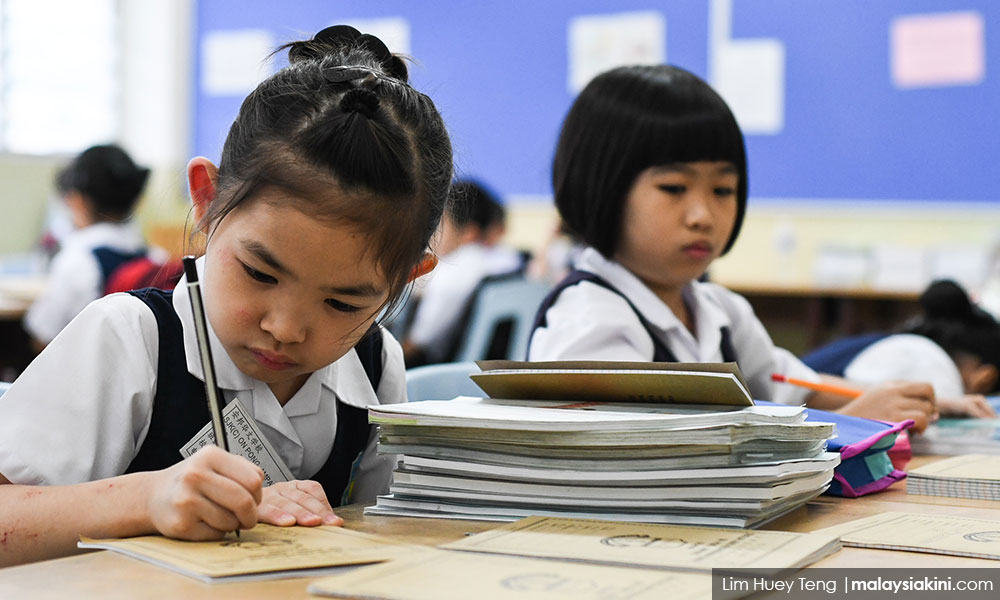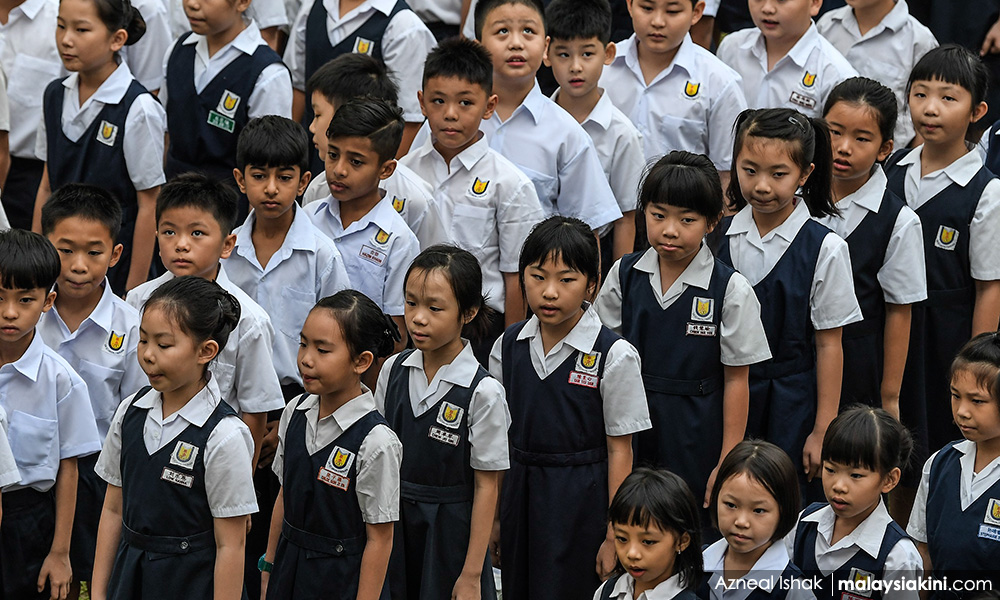The public school system: Moving forward together
COMMENT | In the Malaysiakini special report 'Whither Integration? How our children are growing up in separate bubbles', Aidila Razak highlights the stark racial profiles that mark the variants of public school in Malaysia.
Educational discourse on public schools has been dominated by the frustration of the Malay community over the non-Malay communities’ refusal to integrate and, in particular, Chinese educationists’ insistence on the place of the Chinese public schools in the national school system.
At the same time, the profile of Chinese schools has evolved from an institution for the Chinese community to one that serves Malaysians of all ethnicities, threatening the aspiration to make national schools the ‘school of choice’ for all.
Parents often cite the deteriorating quality of education in national schools as a reason to shun the national school system. The simultaneous rise of private school enrollment marks Malaysia’s increasingly fragmented school ecosystem.
Read more: Whither integration? How our children are growing up in separate bubbles
It could well be said that the quality of education and student diversity are two common themes in this controversial and often racially-tinged debate over the future of public education.
Unfortunately, it has reached a stalemate and is desperately in need of a middle-ground solution.
Quality of teaching
In the Malaysiakini report, parents reportedly identified quality of teaching as a key concern for sending students to national-type schools.
From an outsider’s perspective, this is peculiar. All national and national-type schools are public schools.
Staffing is the responsibility of the Education Ministry, syllabuses are harmonised, and teachers are on the civil service payroll. Why, then, is there a perceived quality difference between these schools?
Let’s assume parents don’t observe wrongly, and there is a genuine achievement gap between national and Chinese national-type schools.
Perhaps the difference lies in school administration. But school administrators are staffed from the same pool of civil servants too.
It may be that the presence of a school-level board of governors improves outcomes, as they have an influence on the operations of the school, and are presumably more familiar with the school compared to ministry bureaucrats.
For instance, the boards of national-type and mission schools are said to have a say in the decision of who should be the school principal. However, the school principal is just one person, and the school syllabus remains the purview of the ministry.
KiniGuide: A guide to the Chinese school education system in Malaysia
Instead, I believe an important component of the success of Chinese and mission schools is the sense of ownership that teachers and the community have towards the schools.
This is something that other schools can emulate, and is at risk of being abandoned should national-type and vernacular schools be converted into national schools.
Diversity and national schools
Most Malaysians can agree that most national and national-type schools are not diverse. We need to actively encourage diversity in all public schools, whether it be diversity of faculty, leadership or student body.
The first solution that comes to mind is to make all schools national schools. However, communities are geographically clustered, and inter-ethnic suspicion will lead students of the same race to self-select into schools. Students of a rebranded 'national' school may still be ethnically homogeneous.
For an example of how nationalising schools can turn out, look at Christian mission schools. To my knowledge, all Christian mission schools in Malaysia have been converted to Malay-medium national schools.
However, some portions of the Malay community reportedly remain averse towards attending a 'Christian' school.
Even though these schools have been nationalised, their perceived link to the Christian community is still very much intact. Is that any different to the current situation for national-type schools, and would the situation change if the national-type schools were converted?
I am of the opinion that the issue of diversity in Malaysian public schools will continue to confront us even if we rebrand all schools as national schools.
Instead, we need to take concrete steps that actually make our public schools more inclusive and diverse places, where every Malaysian feels welcome and not out of place.
Moving forward
Public schools should be diverse and representative of the local community and Malaysian society at large, while acknowledging the past efforts of the diverse communities that built these schools. To do so, we should consider the following:
1. Acknowledge the various heritages of community-driven education in Malaysian education discourse. Today’s schools in Malaysia were built by communities who strongly believed in the importance of education for the growth of their communities, which is an opportunity for building shared values among Malaysians.
The Education Ministry should acknowledge community-driven schools as an important component of the public school system, provide assurance that the administration of these schools will respect the educational traditions of the communities which built these schools, and preserve the voice of local communities in the administration of these schools.
2. Introduce programmes for student exchanges between public schools. Some schools are bound to be ethnically homogeneous despite diversity efforts, and this would create additional opportunities for students to be exposed to other communities in Malaysia.

3. The Education Ministry should state its commitment to ensuring diverse leadership in all public schools, in particular national schools.
Specifically, it should set clear and achievable diversity targets for public school enrolment and leadership to be representative of the ethnic composition of the local community at a minimum.
4. National-type schools must be adapted to become more welcoming for those for whom Chinese/Tamil is not their mother tongue.
5. Ensure community representation across various socioeconomic strata and ethnic groups while developing the national school syllabus.
Conclusions
Malaysians of all walks of life need a sense of ownership in its schools as an important mechanism for social mobility, social integration and inter-communal trust.
Malaysians also need to learn to navigate the complex social fabric that makes up Malaysia’s multicultural society during their formative years.
Embracing the experiences of other communities in the formation of our nation would enrich young Malaysians’ understanding of Malaysian society, past and present.
PHILIP KHOR is a data scientist with experience in economic research.
The views expressed here are those of the author/contributor and do not necessarily represent the views of Malaysiakini.
RM12.50 / month
- Unlimited access to award-winning journalism
- Comment and share your opinions on all our articles
- Gift interesting stories to your friends
- Tax deductable


